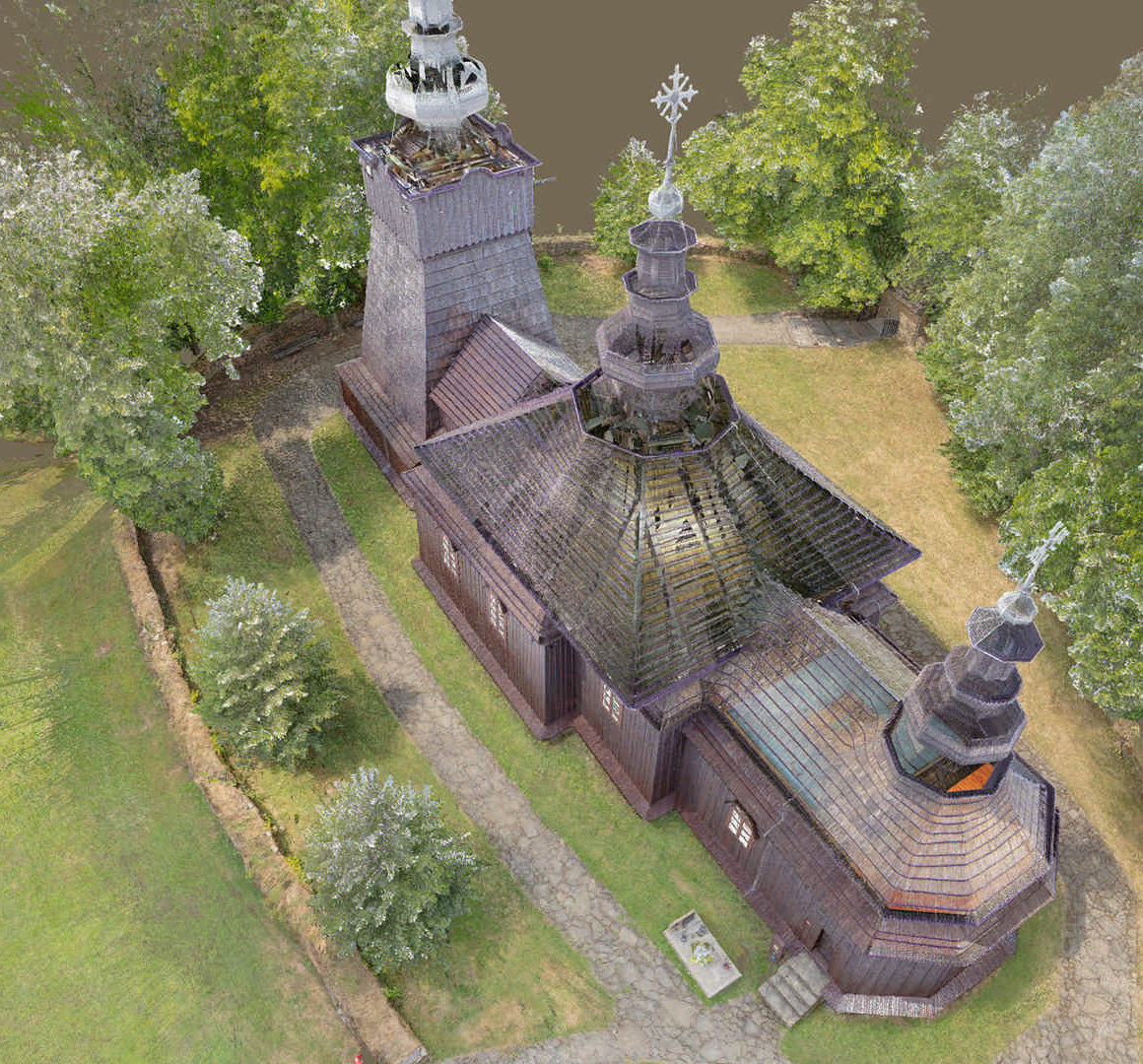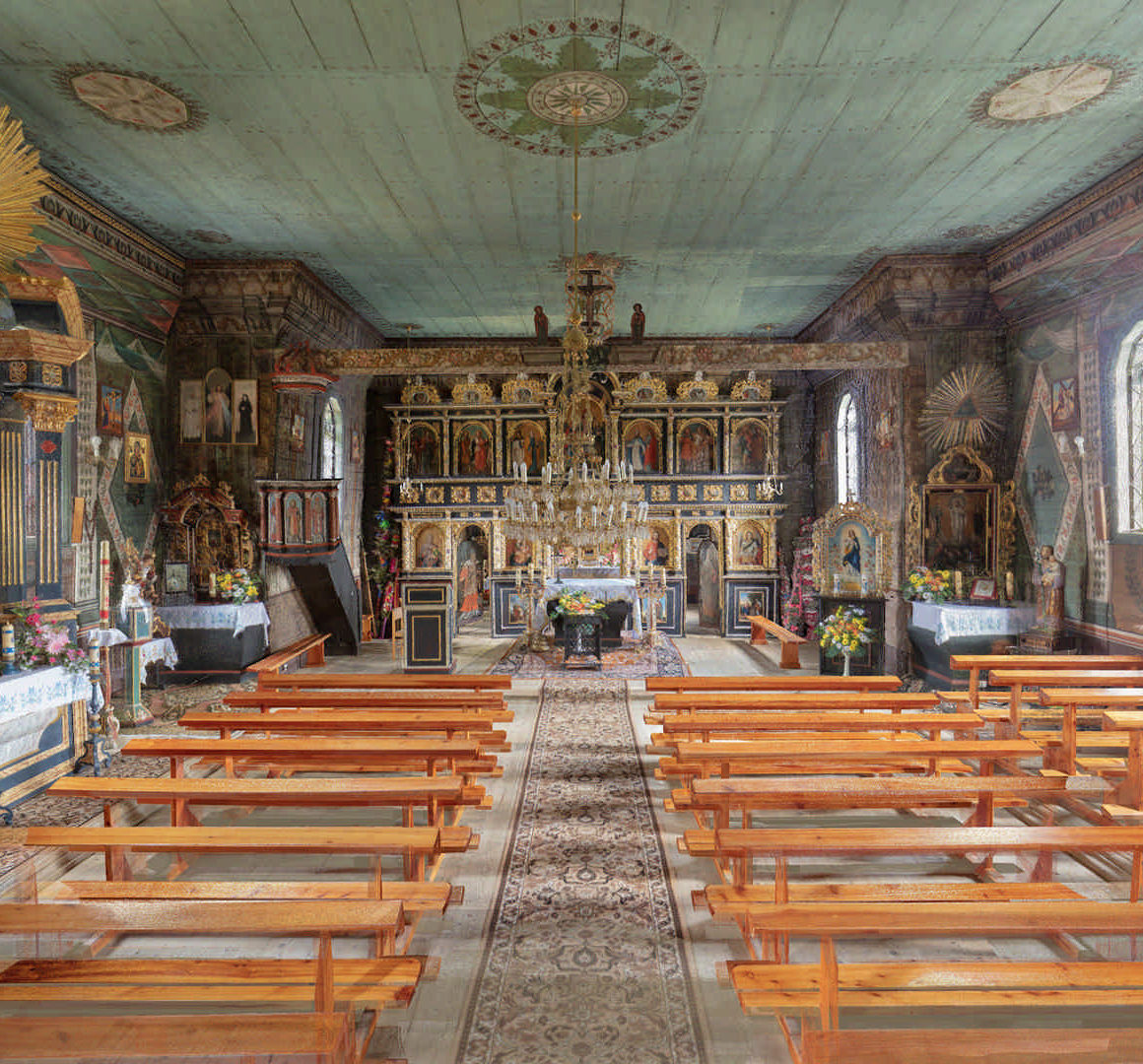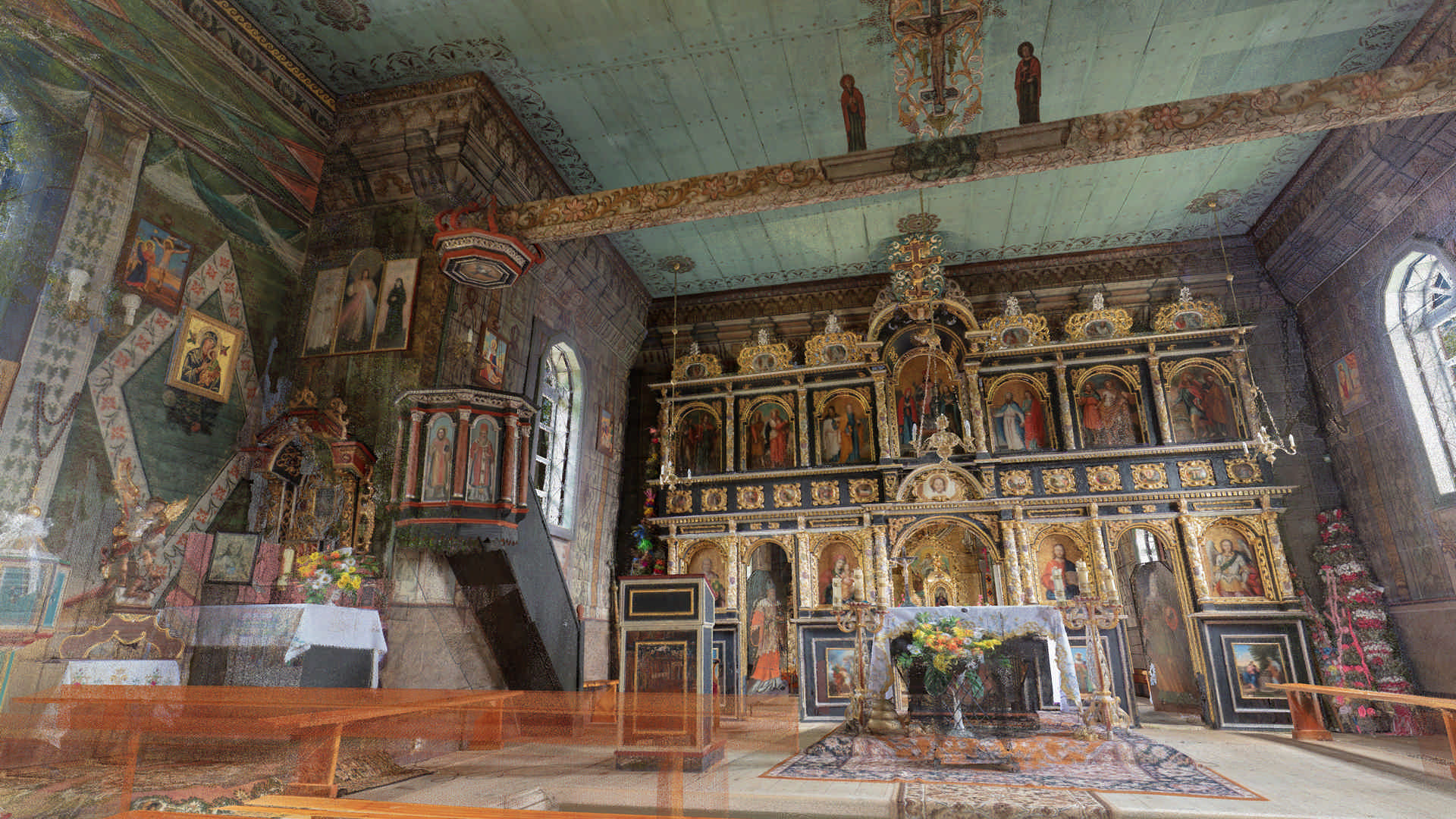Brunary Wyżne – Orthodox church of St. Michael the Archangel
The temple was built in 1797. It is classified as a West-Lemko church. The current shape of the building is a result of the fundamental reconstruction undertaken in 1830-1831, when the church was expanded. That is why it stands out from others due to its size and elongated silhouette. The domes of the two towers, the roofs and the walls of the tower above the matroneum are covered with shingles. The walls of the nave and the sanctuary were boarded (covered with planks). The wood has taken on a dark brown shade.
The dome of the tower above the matroneum is covered with metal painted white – the same way as the finials of the nave and the sanctuary. All the towers are topped with forged crosses with a single crossbeam.
The roofs over the nave and the sanctuary are two-tiered. The lower part of the roof is very narrow.
There are 5 windows on the southern and northern sides. One window on the east. They are rounded in their upper parts and protected by arched eaves.
The nave is the largest part of the temple. After two thirds of its length, it narrows significantly, which resulted from the expansion of the church. The narrower part of the current nave used to be a sanctuary. In 1830, it was combined with the nave. Then
a new sanctuary was added, which is closed on three sides. This means that we have three walls here – diagonal on the sides and straight on the inside.
The church was expanded as it was a very popular place for pilgrimages. Sometimes,
it had to accommodate 10,000 worshipers.
The church was used by Greek Catholics until 1947, i.e. until Operation Vistula. In 1951, after the displacement of Lemkos to the Western Territories, the church was taken over by the Roman Catholic parish of the Assumption of Mary in Brunary.
The church area is surrounded by a small wall made of irregular stones, with two gates. The upper edge of the wall is covered picturesquely with clumps of grass.
The length of the entire mass of the building – 35 m
The width of the matroneum – 5 m
The width of the nave – 11 m
The width of the sanctuary – 6.5 m
The height of the tower above the matroneum – 22 m
The height of the tower above the nave – 20 m
The height of the tower above the sanctuary – 15.5 m
Prestol and kiot in the church in Brunary Wyżne
According to the tradition of the Eastern Church, these items are kept in the church’s sanctuary located behind the iconostasis. On a small platform standing in the middle of the room, there is a mensa, i.e. an altar tabletop, known as the prestol in the Eastern rite. It is covered with a wooden canopy supported on four columns. The prestol is covered with canvas fabric, the so-called antimins. The central place on the prestol is occupied by a richly decorated case called a kiot. The prestol of the temple in Brunary was made of wood at the end of the 18th century, and the kiot – at the turn of the 19th and 20th centuries. They were painted and elaborately decorated. White and gold are the dominating colors here.
Slender columns of the canopy are located at each corner of the prestol built on a rectangular plan. They are about two meters high. Their bases in the form of gray cuboids turn into white cylinders at the top. Their golden heads are crowned with golden floral ornaments. They are linked by a decorative white frame with numerous gilded ornaments. It is carved precisely in the shape of a narrow wavy strip of fabric, with carved tassels attached to its edge. There are gilded beams that go diagonally from one corner of the frame to the other. The masterful sculptor made them into a shape of finely curved stems and leaves. The entire soaring construction leaves you with the impression of lightness.
The sides of the prestol are formed by a solid black surface. On the tabletop, we have the precious kiot. It is a case for keeping the sacramental bread that is left behind after the transubstantiation during the Eucharist. According to the Eastern Rite tradition, the kiot is shaped like a miniature church. It is a cuboid covered with a spherical dome, crowned with a slender tower and a cross. The base of the kiot has sides about half a meter long. It is about one meter high.
There is one silver column at each base corner. They have been carved into spirals. Each wall of the kiot is decorated with paintings. They show scenes of Jesus Christ’s final days on earth. They follow the style of Baroque paintings. The characters are portrayed very realistically. Their faces radiate spirituality. The western wall, i.e. next to the nave, which also serves as the kiot’s door, shows Christ blessing the Eucharistic Gifts. He is sitting at a table covered with a white tablecloth. He is holding a small piece of bread in his left hand and lifting his right one in a gesture of blessing. He has a golden chalice in front of him. The painting on the southern wall shows the Myrrhbearers. The three women are walking as a tight group. They are covered in trailing white, blue, and red robes. They are walking barefoot on the rocky ground. We can see the hills and buildings of Jerusalem looming on the horizon.
The eastern wall is decorated with the image of the Resurrection. Christ is standing on the grave pedestal. We can see his naked torso peeking from under a white cloak. He is giving his blessing with his right hand, while holding up a pole of a narrow red flag with a yellow cross with his left hand. Around the pedestal, we can see three terrified Roman soldiers waking up. They are half-lying or kneeling. We can also see three women approaching the scene from the distance, as well as the hills and buildings of Jerusalem looming on the horizon.
The third painting, on the northern side, shows the scene of the Entombment of Christ – Mourning. The numb, half-naked dead body is held by two men. Another man is leaning, deep in thought, over the edge of the open grave. Another man is standing, staring into the distance with his arms folded sideways. One woman with loose hair is kneeling at the grave. The other two women are standing in the background, huddled and crying. One of them has her face covered by a dark blue scarf.
Video:








